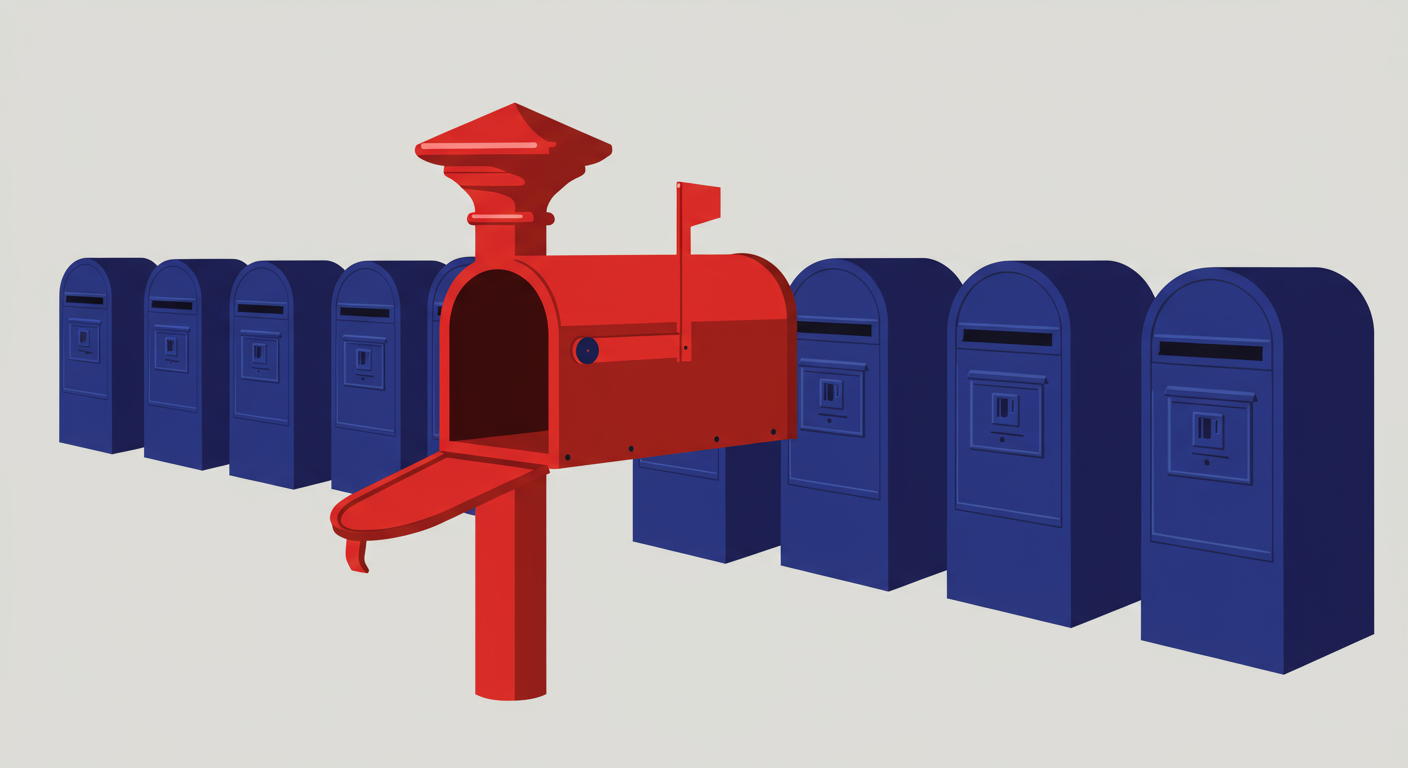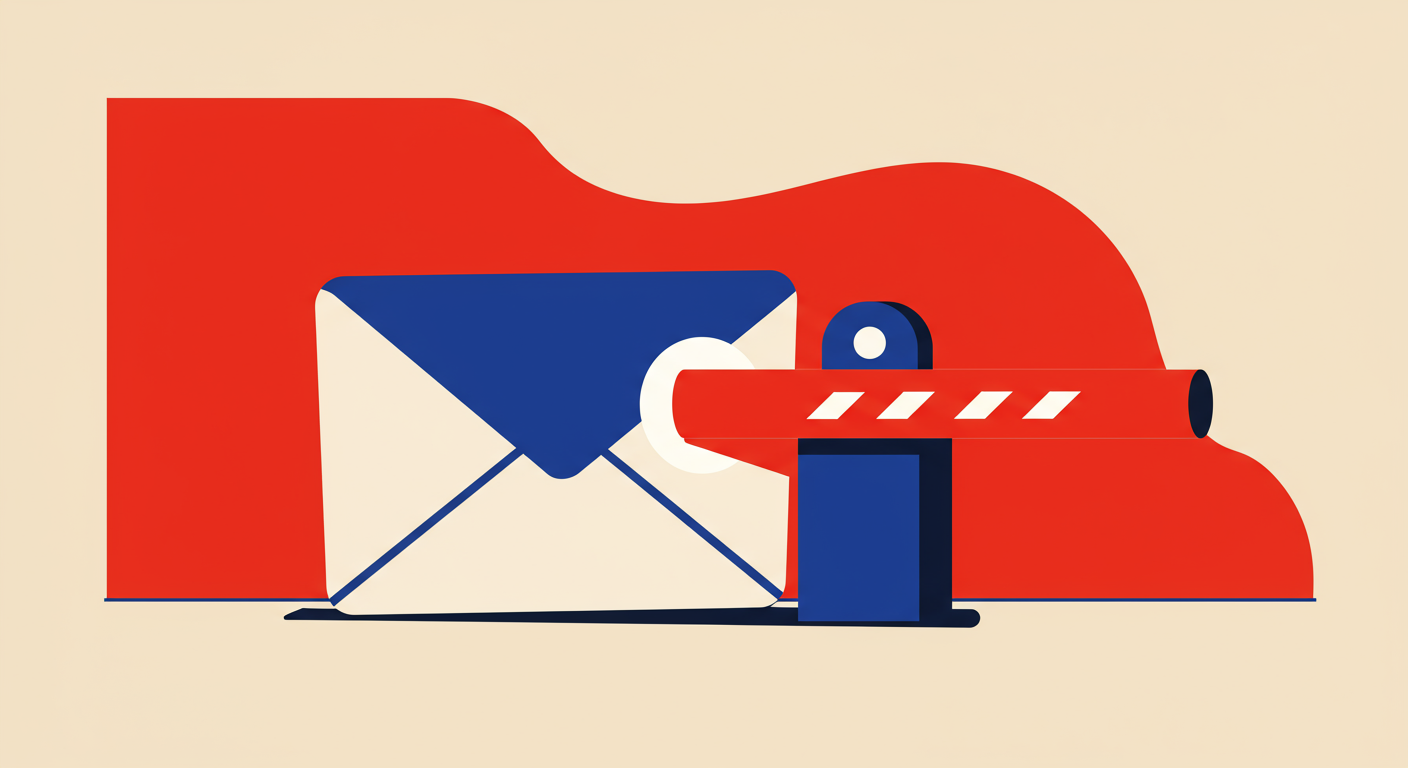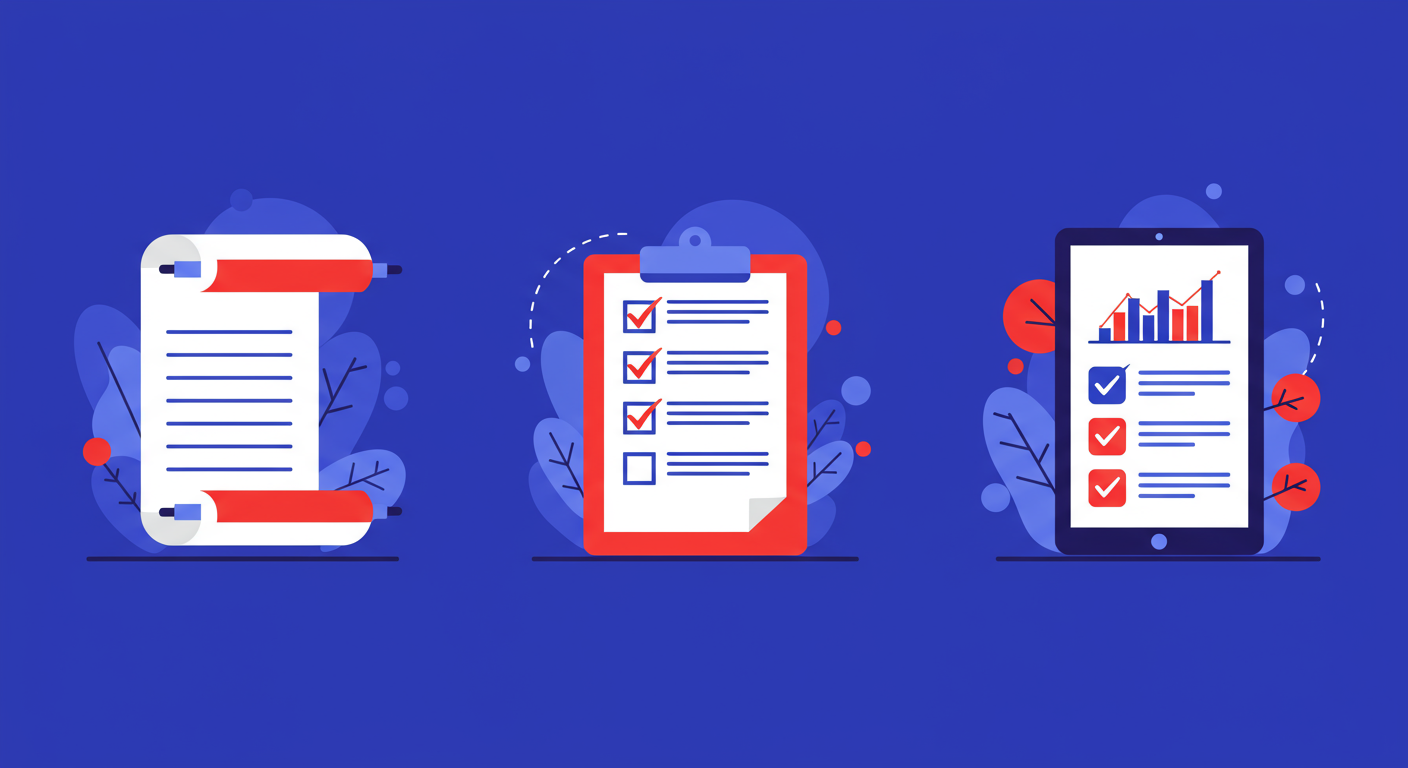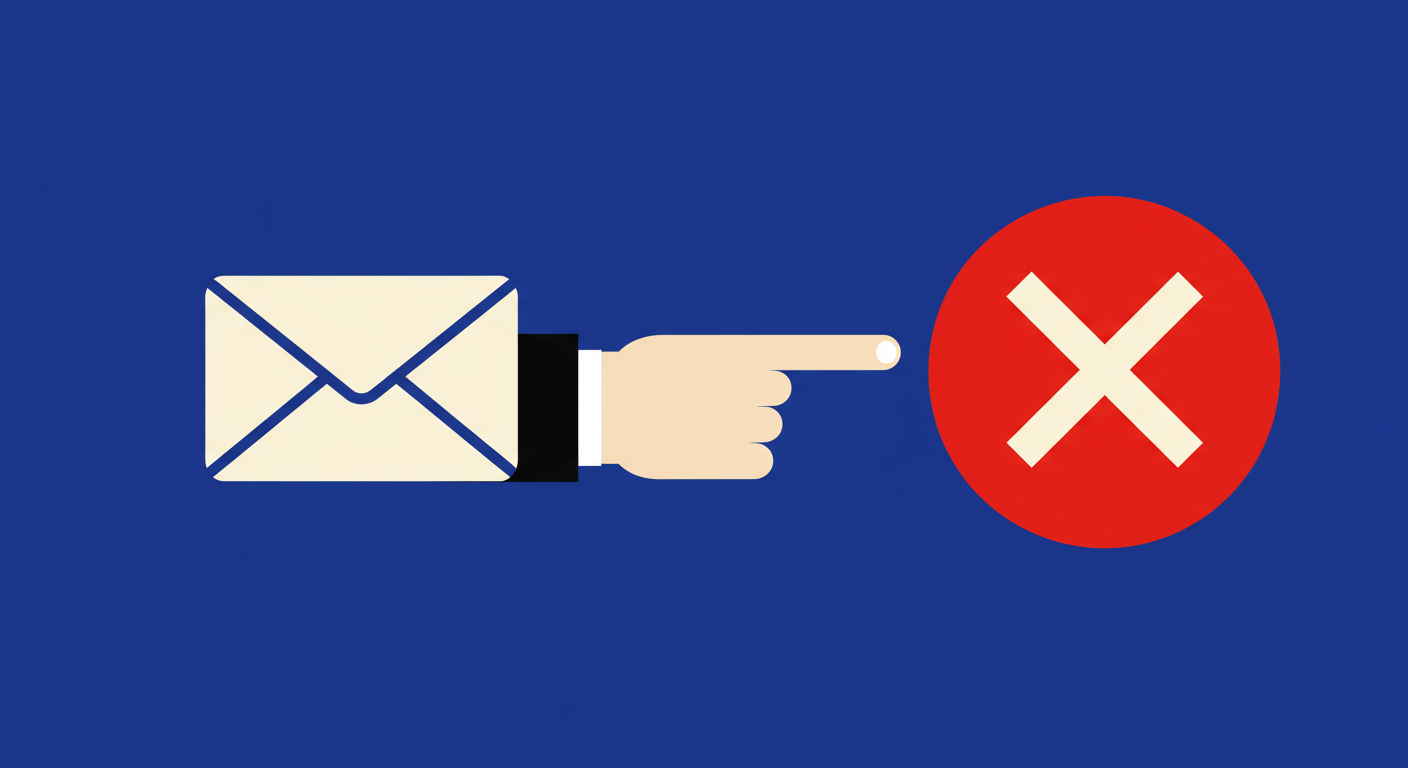The difference between a blacklist and a blocklist



In the world of email, you’ll often hear the terms 'blacklist' and 'blocklist' thrown around, sometimes interchangeably. On the surface, they seem to mean the same thing: a list of things you don't want. If you're on one, your emails aren't getting delivered, and that's a major problem. For years, these terms coexisted, but there's a growing conversation and a distinct shift in the industry that's worth understanding.
Understanding the nuance isn't just about semantics; it reflects a broader change in the tech industry and gets to the heart of what these lists actually do. It’s about precision in language and moving towards terms that are more descriptive and less loaded with historical connotation. As someone who lives and breathes email deliverability, I think this distinction is important.
So, let's break it down. What exactly is the difference? Does it change how you should approach your email strategy? And most importantly, how do you stay off these lists, regardless of what they're called? We'll dive into the history, the modern application, and the practical steps you need to take to keep your emails landing in the inbox.
Historically, 'blacklist' was the go-to term. It describes a list of entities—IP addresses, domains, or email addresses—that are denied access or service. In the context of email, if your sending IP or domain lands on a blacklist run by a major anti-spam organization, mailbox providers that subscribe to that list will automatically reject or filter your emails. It's a mechanism to stop known spammers and malicious actors in their tracks.

The function is simple: if you're on the list, you're out. This concept isn't unique to email; it's used across cybersecurity and tech. For example, you might see discussions about blacklisted plugins in software forums or debates about the effectiveness of different blocking methods. The term itself is deeply ingrained in technical jargon, but that's been changing for some very good reasons.
The core issue with the term 'blacklist' is its origin and the negative connotations associated with the word 'black'. Many organizations and tech leaders have rightly pointed out that language matters, and using terms that can be associated with racial stereotypes is something the industry should move away from.
Enter 'blocklist'. This is the term that is now widely preferred and is being adopted as the industry standard. Functionally, a blocklist is identical to a blacklist. It is a list of entities that are prevented from accessing a system. The key difference isn't in what it does, but in what it's called. 'Blocklist' is a more direct, descriptive, and neutral term.
This shift is part of a larger movement in technology towards more inclusive and clear language. Terms like 'allowlist' (instead of 'whitelist'), 'primary/secondary' (instead of 'master/slave'), and 'blocklist' are all examples of this evolution. It’s about choosing words that accurately describe a function without carrying unnecessary historical or cultural baggage. The goal is clarity and inclusivity, which ultimately leads to better communication and design.
So, when you see me or other deliverability experts using the word 'blocklist', this is why. We are referring to the same mechanism that has existed for years, but we're using the modern, preferred terminology. The underlying principles of how you land on one, and how you get off, remain the same. The challenge for senders is still to avoid them at all costs.
Whether you call it a blacklist or a blocklist, ending up on one is detrimental to your email program. These lists are maintained by various entities, from large-scale cybersecurity firms to smaller, specialized anti-spam services. Mailbox providers like Gmail, Yahoo, and Microsoft use data from these lists, combined with their own internal metrics, to decide whether to accept, filter, or reject your email.
So, what are the common culprits that get you listed? It almost always comes down to poor sending practices and a lack of email hygiene. Your sender reputation is paramount, and these lists are essentially a reflection of that reputation. Landing on one is a clear signal that you're doing something wrong.
The first step in staying clean is knowing your status. You can use a tool like ours to check if your domain is on any major blocklists.
 Spamhaus
Spamhaus 0Spam
0Spam Cisco
Cisco NoSolicitado
NoSolicitado URIBL
URIBL abuse.ro
abuse.ro ALPHANET
ALPHANET Anonmails
Anonmails Ascams
Ascams BLOCKEDSERVERS
BLOCKEDSERVERS Calivent Networks
Calivent Networks EFnet
EFnet
 JustSpam
JustSpam Kempt.net
Kempt.net
 NordSpam
NordSpam RV-SOFT Technology
RV-SOFT Technology
 Scientific Spam
Scientific Spam Spamikaze
Spamikaze SpamRATS
SpamRATS SPFBL
SPFBL Suomispam
Suomispam System 5 Hosting
System 5 Hosting Team Cymru
Team Cymru Validity
Validity www.blocklist.de Fail2Ban-Reporting Service
www.blocklist.de Fail2Ban-Reporting Service ZapBL
ZapBL 2stepback.dk
2stepback.dk Fayntic Services
Fayntic Services ORB UK
ORB UK technoirc.org
technoirc.org TechTheft
TechTheft Spamhaus
Spamhaus 0Spam
0Spam Cisco
Cisco NoSolicitado
NoSolicitado URIBL
URIBL abuse.ro
abuse.ro ALPHANET
ALPHANET Anonmails
Anonmails Ascams
Ascams BLOCKEDSERVERS
BLOCKEDSERVERS Calivent Networks
Calivent Networks EFnet
EFnet
 JustSpam
JustSpam Kempt.net
Kempt.net
 NordSpam
NordSpam RV-SOFT Technology
RV-SOFT Technology
 Scientific Spam
Scientific Spam Spamikaze
Spamikaze SpamRATS
SpamRATS SPFBL
SPFBL Suomispam
Suomispam System 5 Hosting
System 5 Hosting Team Cymru
Team Cymru Validity
Validity www.blocklist.de Fail2Ban-Reporting Service
www.blocklist.de Fail2Ban-Reporting Service ZapBL
ZapBL 2stepback.dk
2stepback.dk Fayntic Services
Fayntic Services ORB UK
ORB UK technoirc.org
technoirc.org TechTheft
TechTheft Spamhaus
Spamhaus 0Spam
0Spam Cisco
Cisco NoSolicitado
NoSolicitado URIBL
URIBL abuse.ro
abuse.ro ALPHANET
ALPHANET Anonmails
Anonmails Ascams
Ascams BLOCKEDSERVERS
BLOCKEDSERVERS Calivent Networks
Calivent Networks EFnet
EFnet
 JustSpam
JustSpam Kempt.net
Kempt.net
 NordSpam
NordSpam RV-SOFT Technology
RV-SOFT Technology
 Scientific Spam
Scientific Spam Spamikaze
Spamikaze SpamRATS
SpamRATS SPFBL
SPFBL Suomispam
Suomispam System 5 Hosting
System 5 Hosting Team Cymru
Team Cymru Validity
Validity www.blocklist.de Fail2Ban-Reporting Service
www.blocklist.de Fail2Ban-Reporting Service ZapBL
ZapBL 2stepback.dk
2stepback.dk Fayntic Services
Fayntic Services ORB UK
ORB UK technoirc.org
technoirc.org TechTheft
TechTheft Spamhaus
Spamhaus 0Spam
0Spam Cisco
Cisco NoSolicitado
NoSolicitado URIBL
URIBL abuse.ro
abuse.ro ALPHANET
ALPHANET Anonmails
Anonmails Ascams
Ascams BLOCKEDSERVERS
BLOCKEDSERVERS Calivent Networks
Calivent Networks EFnet
EFnet
 JustSpam
JustSpam Kempt.net
Kempt.net
 NordSpam
NordSpam RV-SOFT Technology
RV-SOFT Technology
 Scientific Spam
Scientific Spam Spamikaze
Spamikaze SpamRATS
SpamRATS SPFBL
SPFBL Suomispam
Suomispam System 5 Hosting
System 5 Hosting Team Cymru
Team Cymru Validity
Validity www.blocklist.de Fail2Ban-Reporting Service
www.blocklist.de Fail2Ban-Reporting Service ZapBL
ZapBL 2stepback.dk
2stepback.dk Fayntic Services
Fayntic Services ORB UK
ORB UK technoirc.org
technoirc.org TechTheft
TechTheft Spamhaus
Spamhaus 0Spam
0Spam Cisco
Cisco NoSolicitado
NoSolicitado URIBL
URIBL abuse.ro
abuse.ro ALPHANET
ALPHANET Anonmails
Anonmails Ascams
Ascams BLOCKEDSERVERS
BLOCKEDSERVERS Calivent Networks
Calivent Networks EFnet
EFnet
 JustSpam
JustSpam Kempt.net
Kempt.net
 NordSpam
NordSpam RV-SOFT Technology
RV-SOFT Technology
 Scientific Spam
Scientific Spam Spamikaze
Spamikaze SpamRATS
SpamRATS SPFBL
SPFBL Suomispam
Suomispam System 5 Hosting
System 5 Hosting Team Cymru
Team Cymru Validity
Validity www.blocklist.de Fail2Ban-Reporting Service
www.blocklist.de Fail2Ban-Reporting Service ZapBL
ZapBL 2stepback.dk
2stepback.dk Fayntic Services
Fayntic Services ORB UK
ORB UK technoirc.org
technoirc.org TechTheft
TechTheft
In summary, while you might still see the term 'blacklist' in older documentation or forums, the industry is moving towards 'blocklist'. Functionally, they are the same thing: a list that prevents your emails from being delivered. The shift is about using more precise and inclusive language, which is a positive step forward.
Ultimately, what you call it is less important than what you do about it. The real takeaway is that your sender reputation is your most valuable asset in email marketing. Protecting it means adhering to best practices: maintaining a clean, engaged list, sending valuable content, and monitoring your performance closely.
Staying off these lists isn't a one-time fix; it's an ongoing commitment to quality and respect for the inbox. By focusing on that, you'll not only avoid blocklists but also build a stronger, more effective email program that your audience actually wants to receive.












